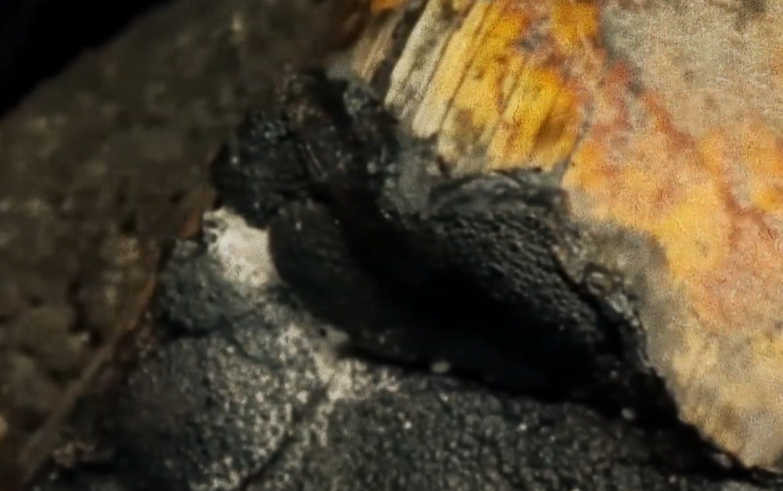The first in situ fossil tooth of the megatooth shark Otodus megalodon has been uncovered in the deep Pacific Ocean by researchers, marking a significant breakthrough.
Published last month in Historical Biology, the study chronicles the remarkable find during a three-week expedition led by the Ocean Exploration Trust (OET) aboard the Exploration Vessel (E/V) Nautilus.
Conducted in the unexplored deep-sea habitats of the Johnston Unit within the Pacific Remote Islands Marine National Monument, the expedition revealed the fossil tooth at an astonishing depth exceeding 10,000 feet (3,090 meters).
The tooth, meticulously collected using the remotely operated vehicle (ROV) Hercules, provides an unprecedented opportunity for scientists to observe and sample a megalodon tooth in its natural environment.
Traditionally, deep-sea fossil collection involved dragging nets across the seafloor, making it challenging to pinpoint exact sampling locations.
However, the in situ discovery offers invaluable contextual information, helping scientists unravel the mysteries of how these fossils formed and the factors influencing their current state. The tooth, partially enveloped in manganese, has particularly intrigued researchers.
Nicolas Straube, Associate Professor at the University Museum Bergen in Norway, emphasized the significance of the find, stating, “The fossil was discovered at a very remote deep-sea locality from which megalodon fossils are rarely documented.”
Megalodons Possibly Migrated Across Oceans

An interdisciplinary team effort including biologists, paleontologists, geologists, and specialists from eight universities in four countries produced this ground-breaking discovery.
Initially identified by the curatorial team at the University of Rhode Island’s Marine Geological Samples Laboratory, the fossilized tooth was later confirmed as a megalodon tooth by Dr. Dave Ebert, a leading shark expert.
Daniel Wagner, OET Chief Scientist, underscored the importance of such collaborations, stating, “By working together, we can learn so much more about our largely unexplored ocean.”
Beyond unveiling a megalodon tooth, the discovery challenges preconceived notions about the species’ distribution. Contrary to the belief that megalodons were strictly coastal, the findings suggest the species migrated across ocean basins, akin to modern-day species like the great white shark.
Located approximately 150 miles south of Johnston Atoll, this revelation showcases the significance of exploring remote and uncharted deep-sea environments.
The Pacific Remote Islands Marine National Monument, designated in 2009, continues to yield valuable insights into the biodiversity, geological age, and volcanic history of this enigmatic region, contributing to ongoing research and unraveling the mysteries of the deep sea.


Comments are closed.